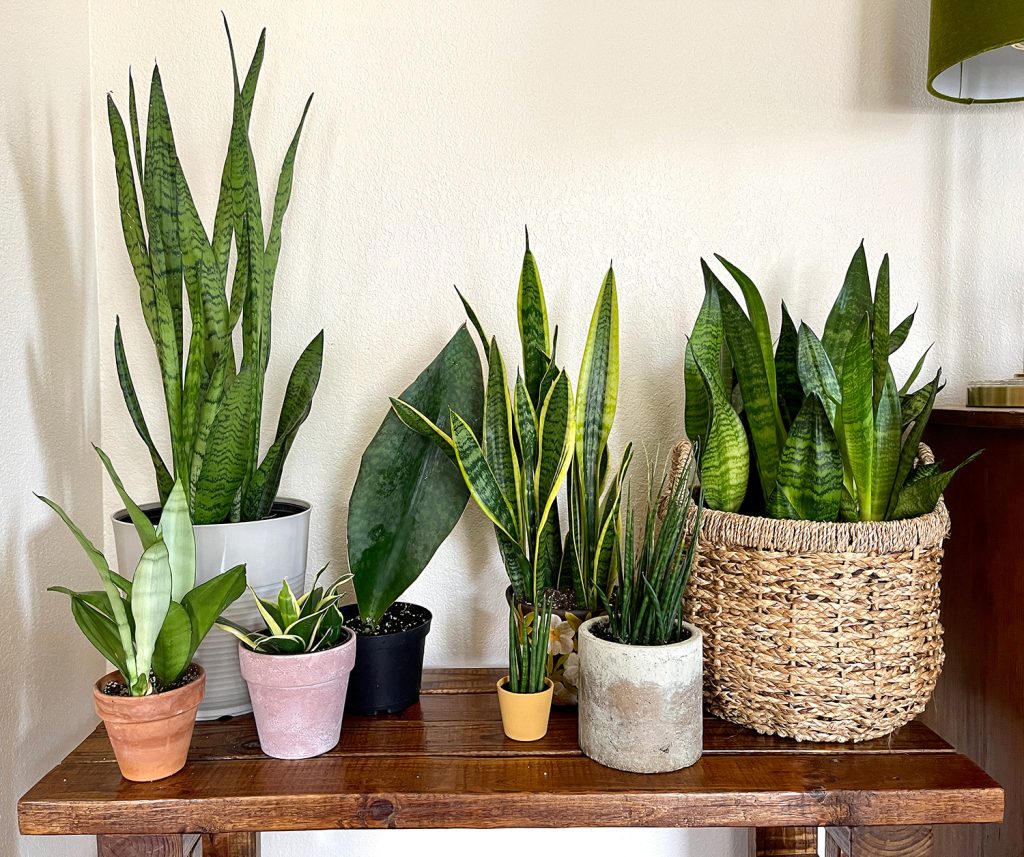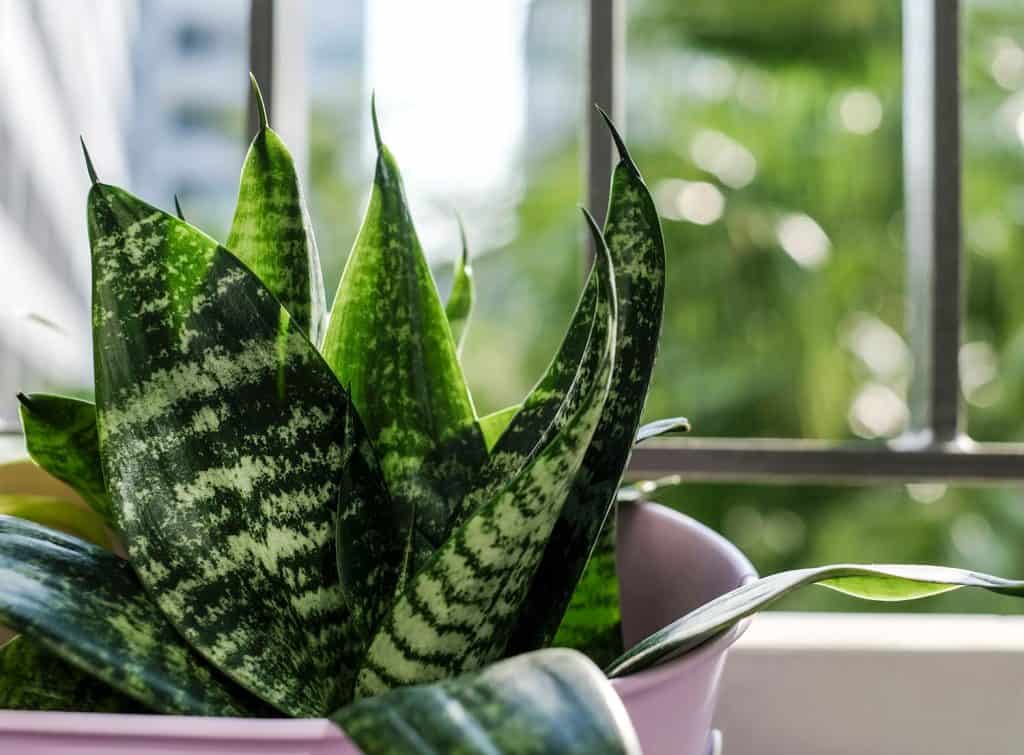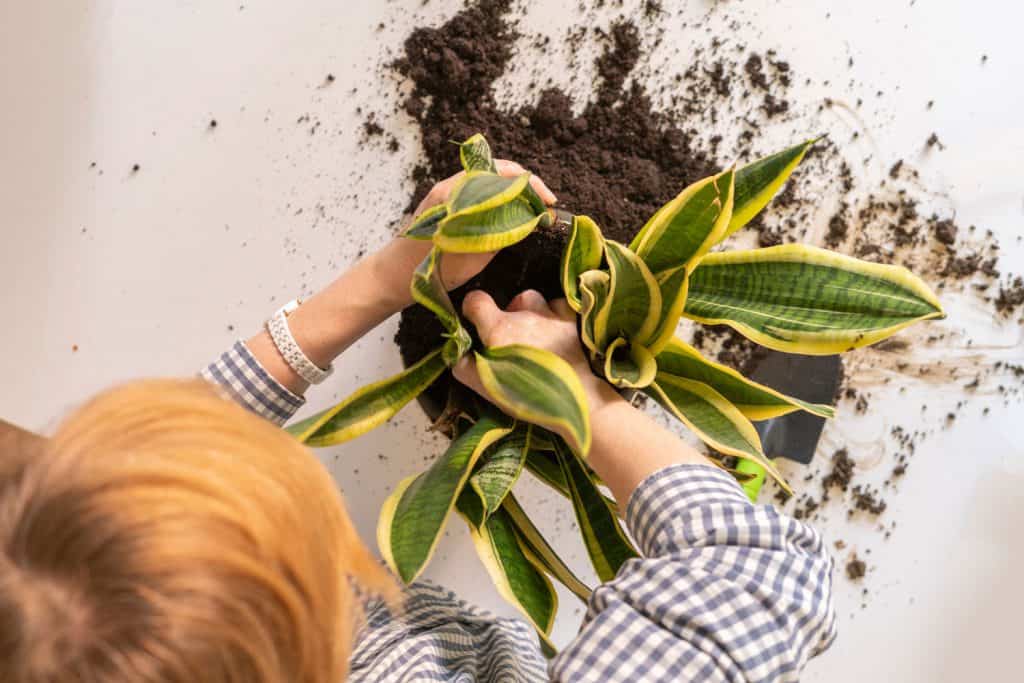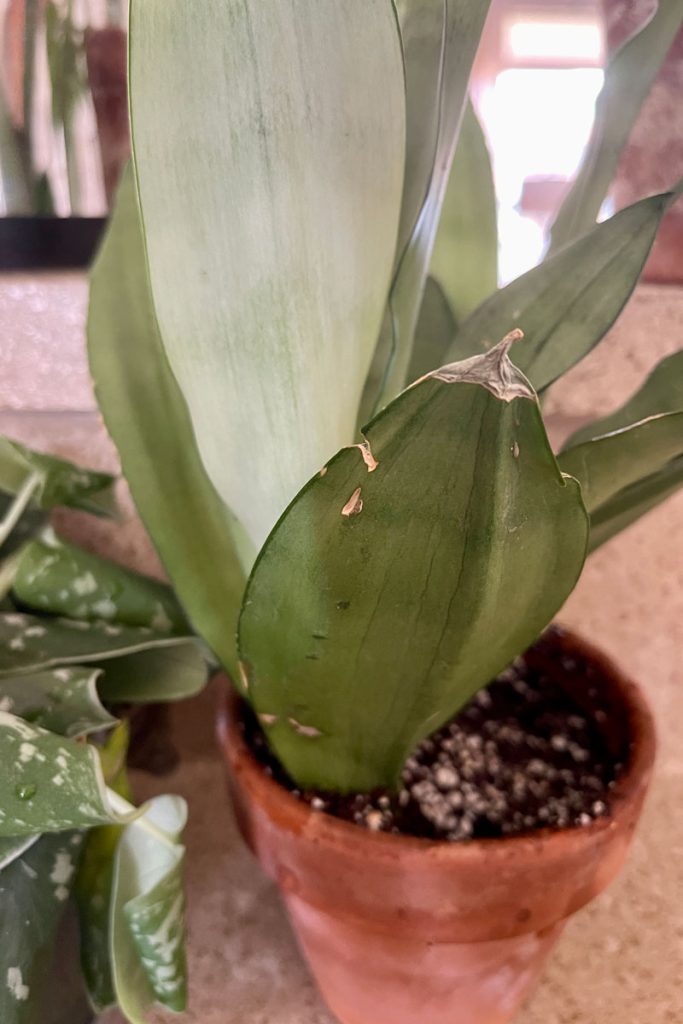Revamp your indoor green space with one of America's favorite household companions - the resilient snake plant, or as botanists call it, Sansevieria.
Notorious for their low-maintenance nature, these sturdy green marvels offer a winning solution for those with a busy schedule or, dare we say, those bestowed with a less-than-green thumb.
A proud member of the succulent family, snake plants take hydration to a whole new level. They boast robust, fleshy leaves that store water like a pro, allowing them to withstand neglect and your extended getaways.
So, if you're guilty of forgetting to water your greens or often find yourself on the move, these loyal companions won't hold it against you. However, the question remains: how often do these botanical beauties crave hydration?
While each snake plant has its own unique needs, on average, they appreciate a good watering every 10 to 14 days. They're patient and prefer waiting for their soil to be parched before quenching their thirst.
As summer heralds warmer days, a weekly watering should keep them happy. And when winter wraps your world in a chilly blanket, a monthly or bi-weekly watering ritual would suffice.
Remember, where they call home in your living space could also influence their watering needs.
However, if the waters of Snake Plant care still seem murky, worry not. This guide will steer you through the watering quandaries, highlighting the optimal watering intervals, best practices, and a wealth of other tips.
So stay with us as we delve deeper into the green world of Sansevieria and unveil the secrets to their carefree spirit.

How Often To Water Snake Plant

Snake plants are known to be one of the easiest indoor plants to care for. They really don't require much maintenance and they can survive very long periods without being watered at all.
And the biggest culprit of an unhealthy snake plant is actually over-watering. Also worth noting, you never want to wet the leaves of your snake plant. The easiest way to water it is to simply use a spouted watering can.
Check out this product on Amazon.
If your plant is located in an area with plenty of sunlight, it will usually require more water to stay hydrated. Typically, when the plant is placed in a shady area or one with lower temperatures, it will require less water to stay hydrated.
It's common to overwater the plant in the winter, and doing so can cause significant damage to the leaves (which we'll discuss later).
It's pretty easy to overwater snake plants, so always make sure that your soil is completely drained after each watering session.
If your plant receives more sunlight than shade, you may need to water it a bit more often—which still won't be often. Also, if your plant is in a bigger pot, it will typically need more water, based on the soil volume.
The best lighting situation for a snake plant is indirect sunlight, as direct sunlight may be too intense for the plant's leaves and may cause them to burn.
Steps To Determine When Your Snake Plant Is Sufficiently Hydrated
If you have purchased a snake plant for the first time, it may be challenging to determine when the plant is sufficiently hydrated, so here are a few tips to help you create the perfect watering regimen.
Step 1
Right after you water your plant, you will notice that the topsoil has grown darker (either dark brown or a blackish brown-depending and the type of topsoil that you use).
You'll also notice that the soil seems to shine a bit immediately after the watering (for a few seconds at least).
This means that you provided the soil with more than enough water to soak up for the moment. If you press your finger on the soil you should be able to see water squeezing out of it, above your finger.
Step 2
After you've watered your snake plant, be sure to hang around to observe the change in color of the topsoil. This usually takes anywhere from 1-2 hours.
At this time, you will notice that the soil no longer shines, but is still darker and appearance than it was before you added the water.
If you press your finger down on the soil, you shouldn't see any water rise to the surface above your finger.
Step 3
After anywhere from 24 to 36 hours, you should notice that some areas of the soil are still dark black or brown, while other areas have lightened up a bit. This is a good sign.
There shouldn't be any water sitting above the surface of the soil, and if you press your finger into the soil, it should feel moist to the touch.
If the top of your soil is still dry, this is a sign that you have not adequately watered the plant and it may need more hydration.
Scenarios That May Require More Hydration
There are times when your plant may quickly consume water than it normally would, in which case it will require a bit more watering. Keep in mind this is still relatively minimal compared to other indoor plants.
- If the plant receives a fair amount of indirect sunlight and is actively growing
- If your snake plant variety originates from wetlands or swampy areas
- Your plant has a lot of foliage and is actively growing
- The home environment is dry due to low humidity or high temperatures
- If you notice that the plant's leaves are growing thin
Signs That Your Plant Is Underwatered
- The leaves start to grow wilted or dry
- The leaves begin to drop off at a rate higher than they are growing
- When the leaves appear translucent or brown (especially on the edges)
- The leaves start to twist and fall off
Signs That Your Plant Is Overwatered
- The plant's leaves appear droopy
- You notice areas of mold on top of your soil
- Newly-grown leaves are falling off the plant
- There are long periods where there is standing water at the bottom of the plant saucer
- Your plant is starting to emit a sour, rotting smell (especially at the roots)
When To Reduce Hydration
There are also times when your plant may not be necessarily overwatered but will require less hydration. These scenarios include the following:
- If the environment of the plant has a relatively high humidity (a hygrometer can help to monitor this)
- Right after the plant has been transplanted
- If the snake plant is typically kept in a relatively cool and shady room
Quick tip about fertilizer: One thing that doesn't receive a lot of attention during discussions on how to care for a snake plant is fertilization. The reason is that snake plants don't typically require much fertilizer. However, they will grow a bit more if they are fertilized once or twice a year.
If anything, you can fertilize them on a semi-annual basis. They may also require fertilizer if they are in a dying state and need more nutrients to survive.
See this fertilizer on Amazon.
How Long Can A Snake Plant Go Without Water?
Known for their amazing stamina, snake plants can navigate a hydration-free journey for up to six weeks.
However, this survival superpower can be influenced by the world they inhabit, including the warmth of their surroundings, the daily sunshine, the indoor air's moisture, and the plant's specific variety.
Imagine a sun-kissed indoor space with the thermostat dial turned up, a dry spell in the air, and your snake plant basking in the luminous rays.
Now contrast this with a cooler room, gentle, diffused light, and a subtle moisture blanket. The water cravings of your snake plant will differ between these scenarios, adjusting to their environment.
To keep your green companion in their prime, serve them a refreshing sip of water at least once a month. This rhythm becomes even more essential during the summer when the days are longer, warmer, and thirstier.
Adapting your care to the changing seasons not only ensures their health but also lets them shine in their full botanical splendor.
Can You Overwater A Snake Plant?

Absolutely. Being that snake plants don't require a lot of water, it is very easy to overwater them.
If the plant's soil becomes too saturated with water, the oxygen within the soil will be pushed to its surface, making it unavailable to the plant's roots.
Also, if there is pooling water at the bottom of the pot's saucer, it can cause the plant to develop root rot. And it could expose it to several infections from bacteria and soil-borne fungi. Just be sure to empty out the plant saucers after watering your plants.
Testing The Soil Of Your Snake Plant

You can quickly gauge the moisture level of your snake plant's soil by simply sticking your finger down in about 2 to 3 inches. You can also use a garden stake. After doing that, note the following:
The Soil Is Still Wet (Or At Least Fairly Damp)
If this is the case, the plant does not need water at this time. Also, take into consideration the environmental conditions in which your plant is located.
These can affect how soon the plant will need to be rewatered, which can be anywhere from a few days to another week.
The Soil Is More On The Dry Side, But Still A Bit Moist
In this case, the soil is on the dry side (but not completely dry), so you may want to wait for another 2 to 3 days before watering it. With snake plants, it's better to water them later than to water them too soon.
The Soil Is Bone Dry
If you stick your finger in the soil and it is bone dry or unpenetrable, chances are it's time to give your plant a good watering session.
What Does An Overwatered Snake Plant Look Like?

If your snake plant is receiving too much water, it will quickly let you know.
If you notice that the tips of your plant are starting to turn brown or droop low to the ground, this could be a sign that your plant is receiving a bit too much water. It could then be headed toward an unhealthy state.
Another sign that your plant may be receiving too much water is if the leaves start to turn mushy or have a soggy texture to them when you squeeze them a bit.
If the leaves are full of water, fall back on the watering sessions for a week or two and continue to monitor the soil.
Let it stay dry for a bit before your next watering session, so that your snake plant can revive itself and the excess water can evaporate.
What's The Best Type Of Water For Snake Plants?
For the most part, any type of water used on indoor plants will be suitable for use with snake plants. However, the best types of water to use include rainwater or spring (bottled) water.
Rainwater and spring water don't contain the harmful minerals that can stunt the plant's growth, especially when compared to hard water.
And while distilled water isn't necessarily bad for your snake plant, they tend to grow faster when watered with spring or rainwater.
Wrapping Things Up
Proper watering is essential to the growth and healthy state of your snake plant. Though watering is not required very often, it's best to check the moisture levels of your snake plant at least weekly to ensure that it's neither overhydrated nor underhydrated.
Interested in learning more about snake plants and other types of succulent plants? Be sure to check out our other posts before you go:


